We stayed up long enough to experience going through the lock. The river gets higher as you go from Budapest to Prague, meaning you have to traverse through various locks to either raise the level of the water or lower it, depending on which direction you are going.
The boat pulls into a long, narrow corridor. Once inside, the solid gates close behind us and the gates in front open up. Water fills the corridor and you can experience the entire ship rising. The boat is not more than a few inches from the side of the corridor, which is amazing to see. It is done with meticulous care.
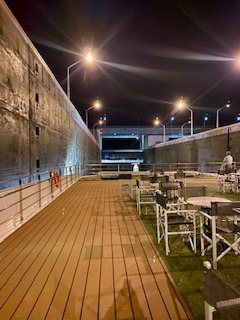
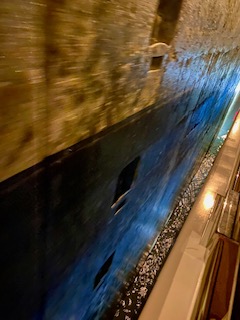
This occurred over night, so this morning, we docked in Linz to go to Cesky Krumlov in the Czech Republic, to enjoy this charming town, and another castle! The river. After Prague, it is the most visited tourist attraction, mainly due to how it has remained largely intact over the course of the centuries. Most other towns suffered damage during WWII, but not here.
The gentle river that meanders around the town forms two prominent horseshoe bends that cradle around the central part of town. You can take a raft on the river and go down a gentle rapid, or go on a kayak, which many tourists were enjoying.
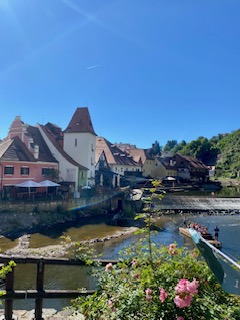
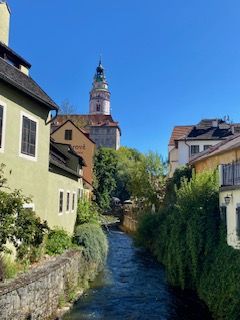
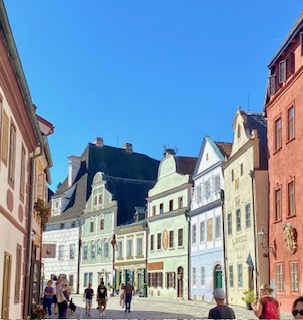
Cesky Krumlov Castle (of course, another castle) dates back to the 13th century, and rebuilt in the 16th century by the Rosenberg family, part of the prominent Bohemian aristocracy and great patrons of the arts. Ownership of the castle passed through several families, including the Schwarzenbergs, but it was transferred to the Czechoslovak state. It is the second largest in Czechia, after the Prague Castle, and one of the largest in Europe. The two family names could be thought of as Jewish families, but they were not.
By the way, Budweiser beer started here and has nothing to do with Budweiser in the US. They had the name first!
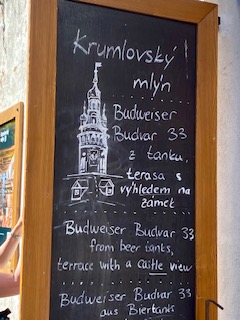
The town itself is charming. We had lunch with some new friends from Canada overlooking the water before heading to the Castle. In all of the pictures, if you see what looks like bricks or three-dimensional art, it is all trompe l’oeill. The artisans who built the Castle used various means to make the outside of the buildings have dimension. The term in French means “fool the eye,” which it does. And, it is everywhere!
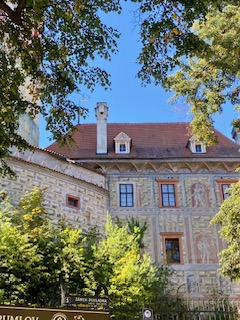
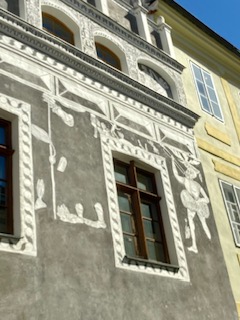
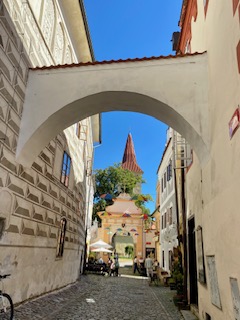
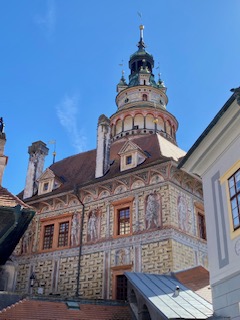
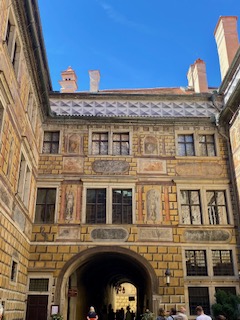
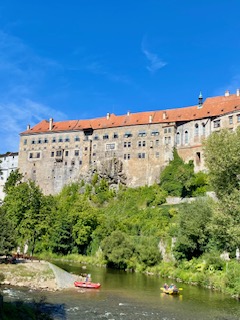
If you enlarge the pictures, you think you are seeing bricks or stones on the outside of the buildings. It is an amazing feat to create something so real, yet the walls are flat!
Another interesting feature is that just outside of the Castle, there are two bears (brother and sister), who live on one side of the ramp to go in, and mama bear lives on the other side. Unfortunately, the bears were hiding or too dark to see. They have been there for years.
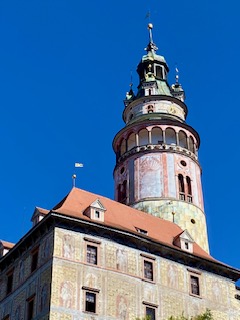
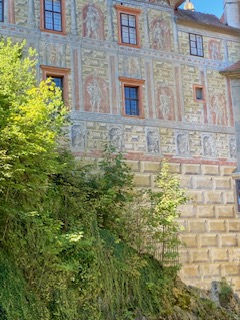
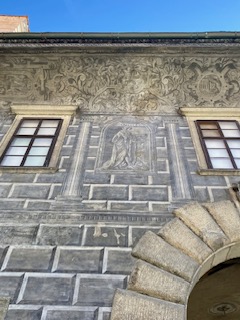
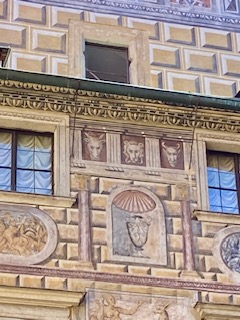
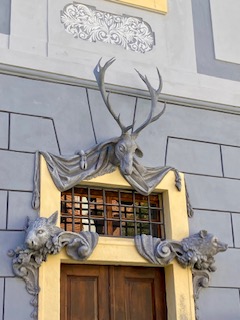
The last picture with the deer and boars is a shout-out to the hunting that was done from this castle. And no, they are not trompe l’oeill, but real sculpture.
We returned to the boat to relax for our overnight to Passau. It was another great day.
